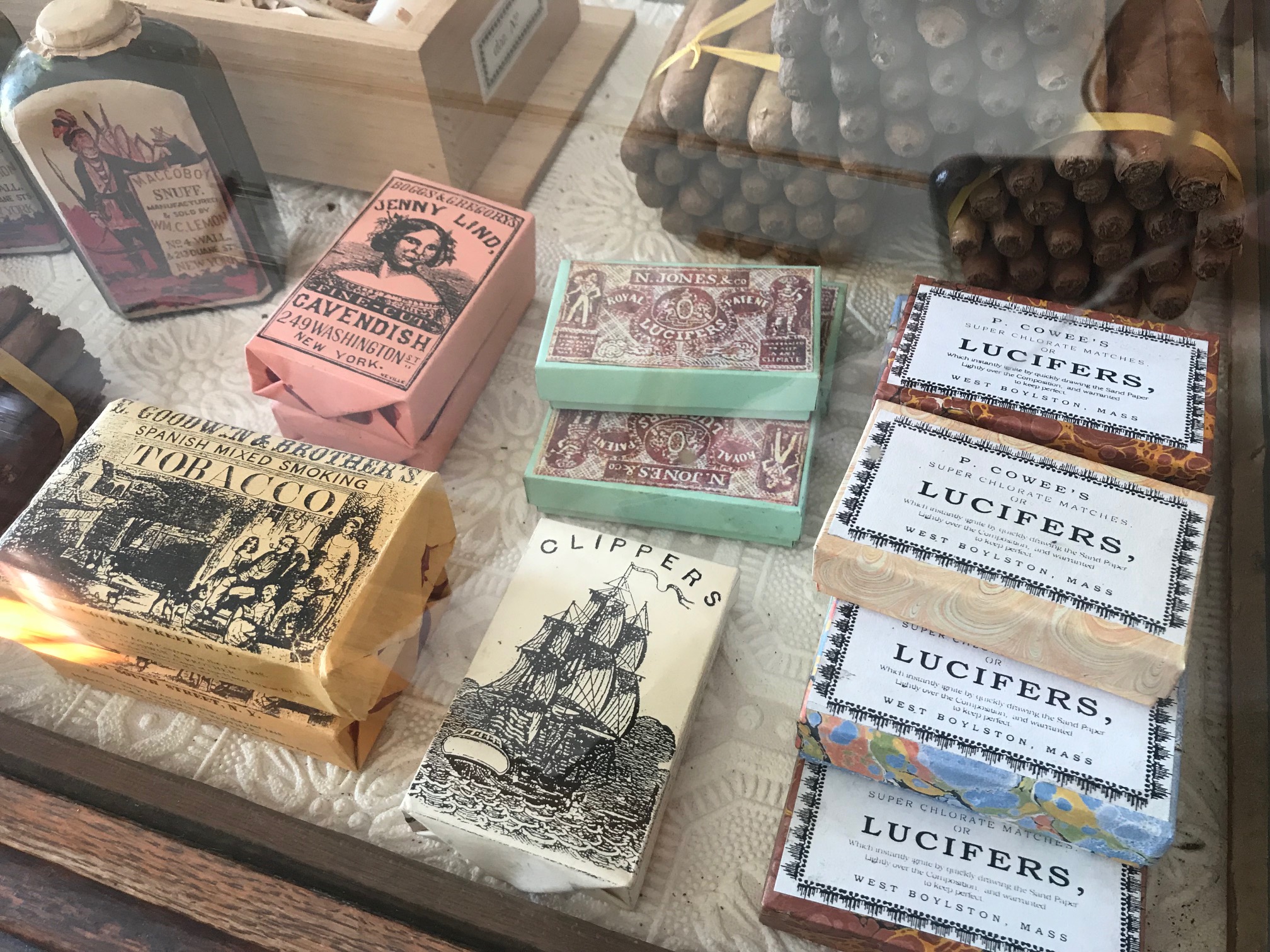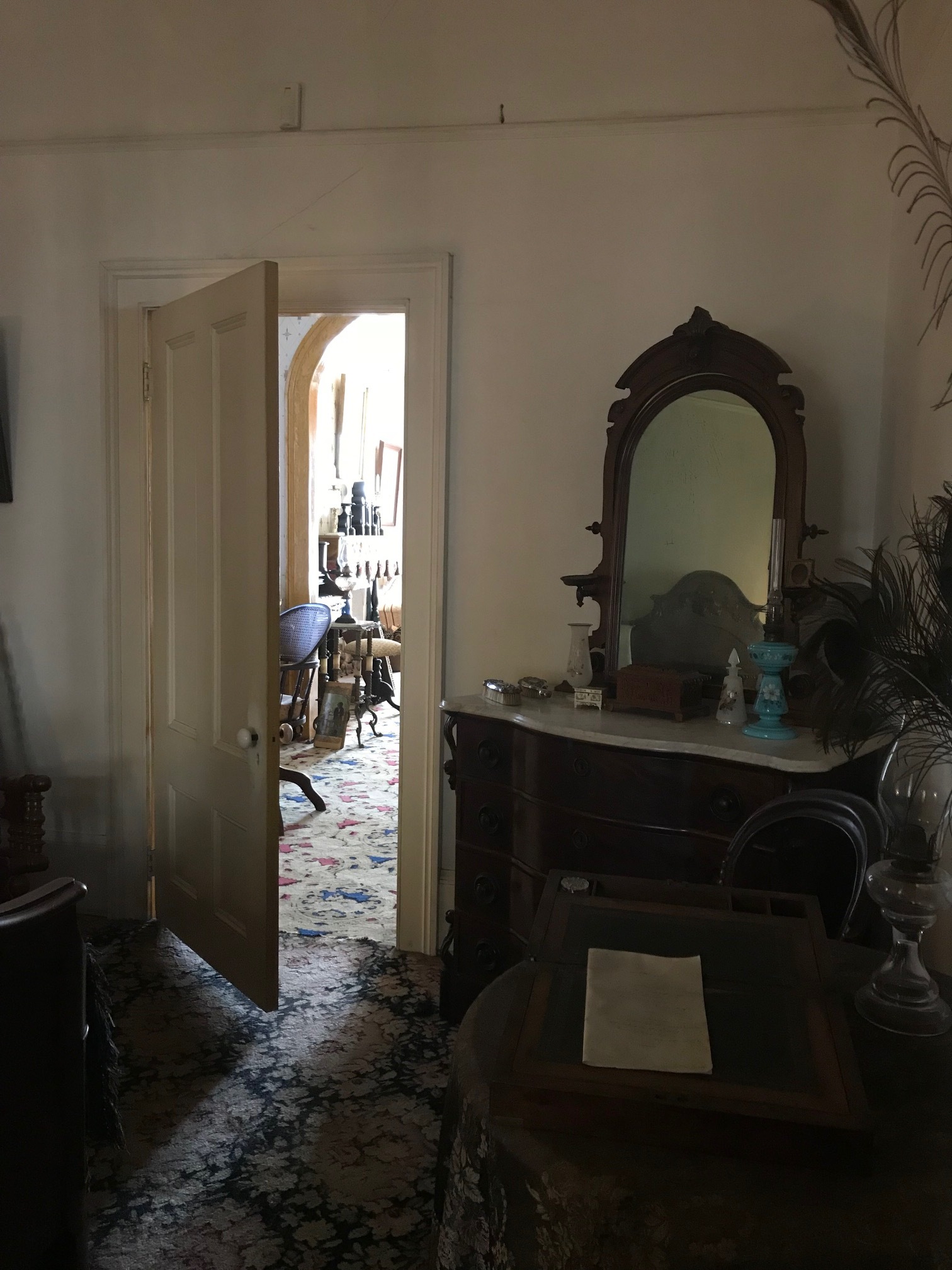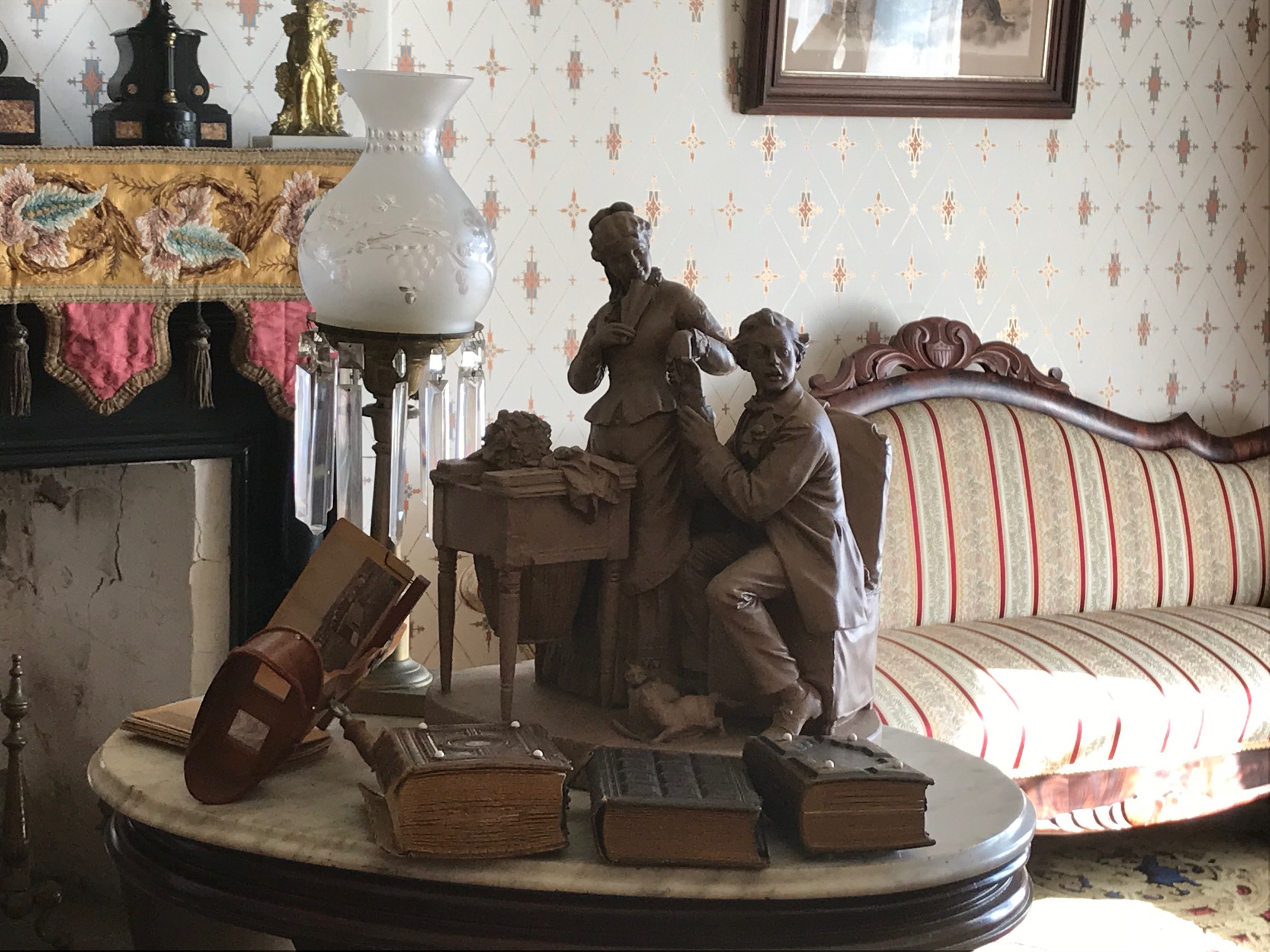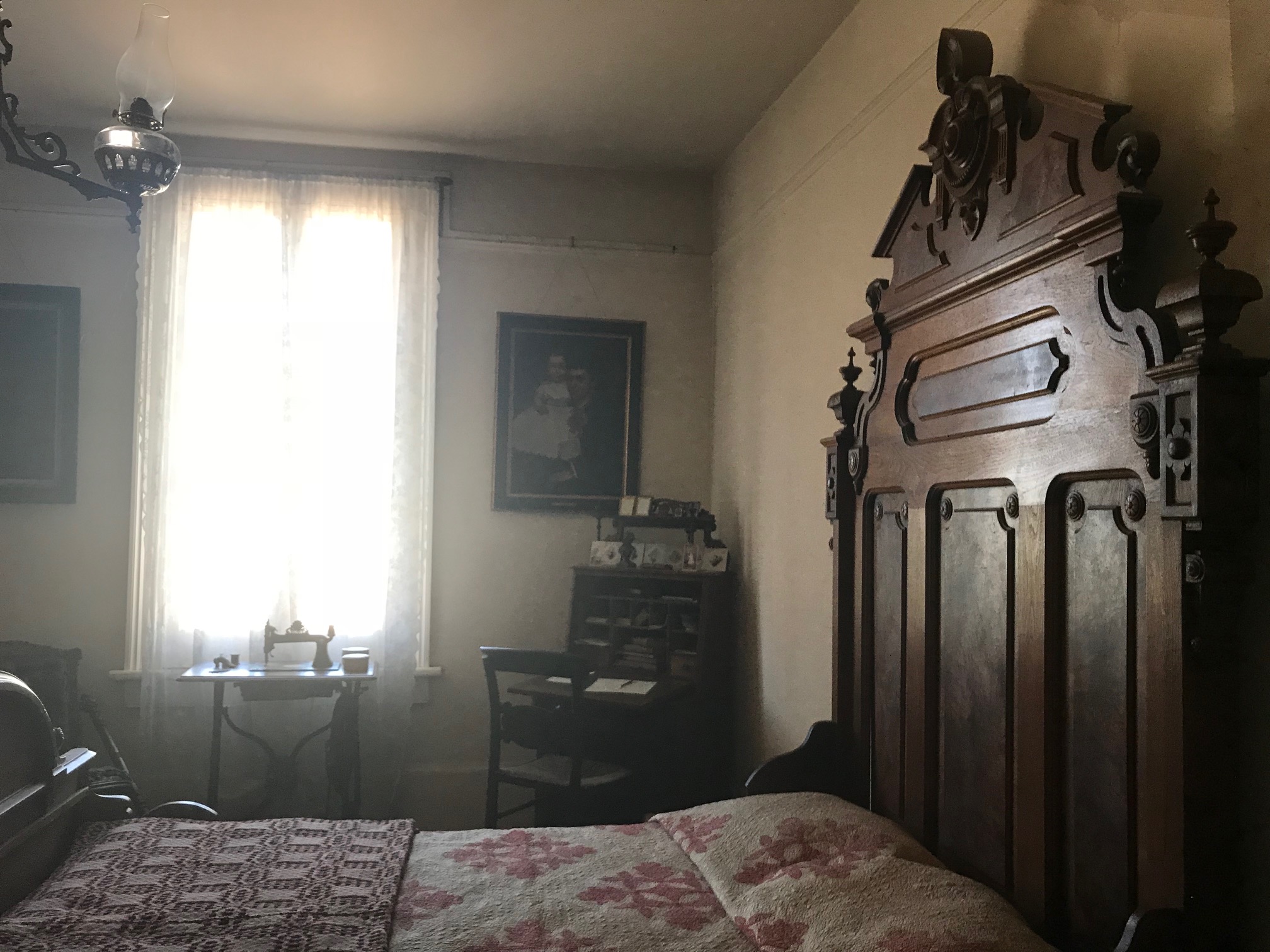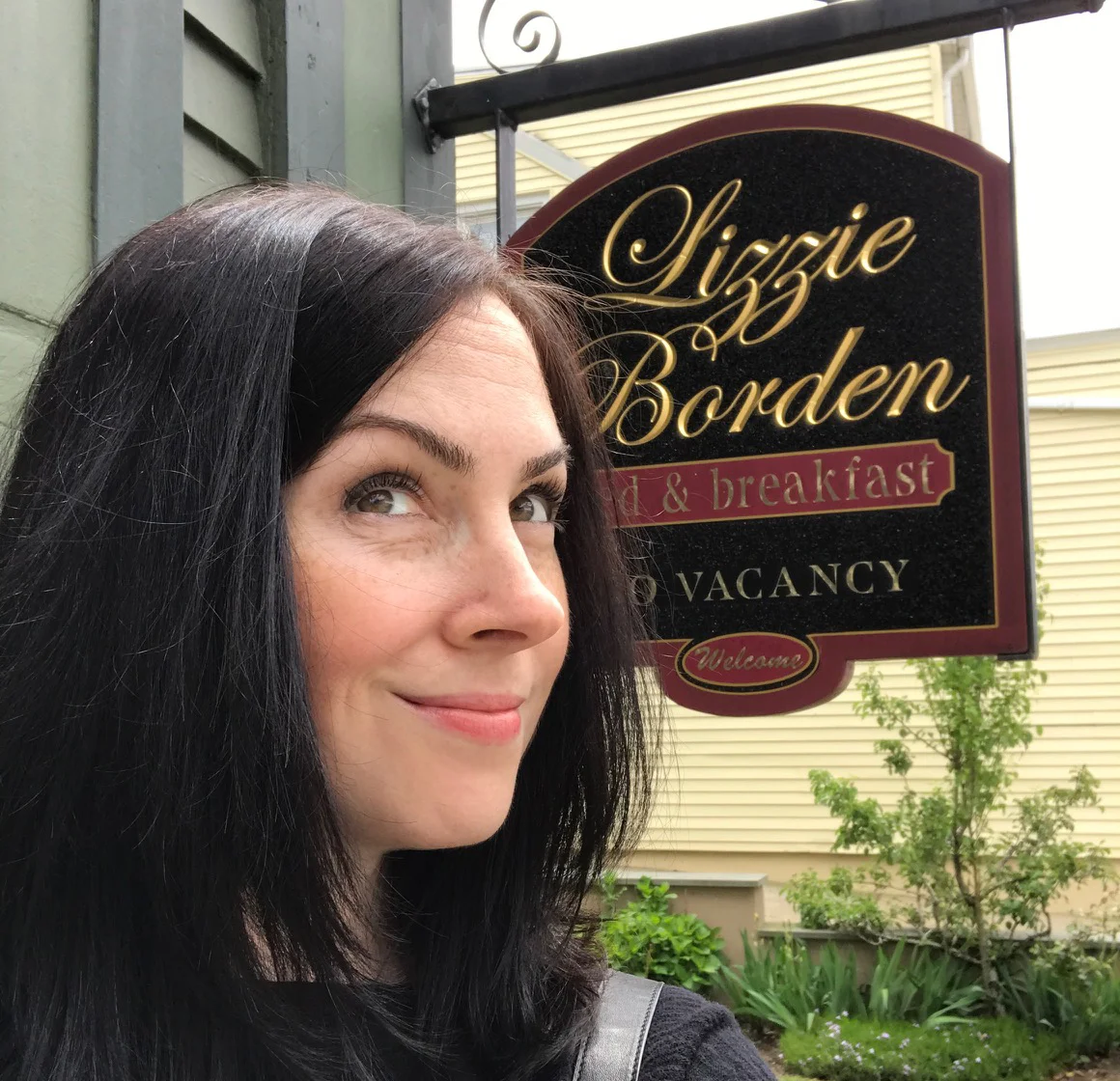Whaley House: America's Most Haunted Home
Travel Tip: Always maximize your time when traveling for business. I flew out to San Diego last week for a work-related event, but like most events, there's down time. You can choose to spend those hours sitting in your hotel room or you can choose to go visit a famously haunted historic house. I chose ghosts, naturally.
The plaque reads, "Built by Thomas Whaley in 1856–57, this is the oldest brick structure in Southern California. In addition to being the home of the Whaley Family, it served variously as granary store, court house, and school, and as the town's first theater. Whaley's home was the cultural center of San Diego as well as its most luxurious residence."
The history of the Whaley House begins in 1852, when it was nothing more than a vacant lot on the edge of town. A local thief named James Robinson had been captured by authorities, convicted of attempted grand larceny, and brought to a yard opposite the El Campo Santo cemetery to be sentence to death by hanging. A makeshift gallows was crafted in the back of a wagon and James (aka Yankee Jim) was given the benefit of a quick baptism before the noose went around his neck. I guess it’s easier to murder someone if you tell yourself you’re sending them to heaven. Anyway, Jim was 6’4” so when he dropped from the gallows, his toes touched the wagon floor. Newspapers of the time said he "kept his feet in the wagon as long as possible, but was finally pulled off. He swung back and forth like a pendulum until he strangled to death."
As with any town hanging, the neighborhood had all come out to watch. In the crowd that day was a young man named Thomas Whaley. He watched the whole tableaux play out on the corner and probably thought to himself, “Wow, this is a really nice piece of real estate! I’m gonna build my dream home here. You know, after the body is taken away and stuff. Obviously.”
Tom had relocated here from New York City. On New Year’s Day of 1849 he had packed up and headed out to them there hills at the height of the California Gold Rush to make his fortune. He eventually landed in San Diego and in 1855 (three years after the hanging), purchased this vacant lot so he could build his work-from-home business here.
Whaley was quoted as saying, "My new house, when completed, will be the handsomest, most comfortable and convenient place in town or within 150 miles of here." True to form, it was. When construction completed in 1857, he was the proud owner of the first two-story building in the entire city, complete with mahogany, rosewood, fancy curtains, and one bonus soul of a pissed off convict. His living room was poised directly over top of the gallows-wagon that Yankee Jim swung from three years earlier.
Whaley & Crosthwaite General Store
From the moment he moved into the house, Thomas Whaley felt an undeniable presence. He was the first on record to note the sounds of heavy disembodied footfalls up on the second floor when no one else was home. His wife Anna Whaley felt a presence in the house that surrounded her and one that she could not seem to shake off. Part of this presence was probably the thick air of marital tension caused by the fact that her husband built her bedroom over a murder site. I can’t imagine how that conversation went down.
But I guess it wasn’t as oppressive as it sounds because between the two of them, Thomas and Anna managed to get down to business and bang out six kids between them. Francis, Thomas Jr., Anna, George, Violet, and Corinne. That’s a lot of mouths to feed, so they partitioned off sections of their palatial home to rent out as office space.
Whaley & Crosthwaite General Store
Whaley ran a general store on the ground floor with his business partners called Whaley & Crosthwaite. It also held the honor of being the first bilingual store in the area. The large room behind it first served as a grain store room, then was refurbished into a ballroom, then a billiard hall, a Sunday school, a polling station, and finally the San Diego County Courthouse. It’s within this room that modern day visitors claim to hear the disembodied sound of a wooden gavel hitting the block.
Despite having multiple revenue streams and business ventures on lockdown, all was not well within the Whaley home. Thomas had to contend with not one but two arson-set fires at off-site store fronts. In between that chaos, the Whaleys’ 18-month old son Thomas Whaley Jr. died of scarlet fever. The cries and laughter of an invisible toddler are said to ring out through their home, which probably makes being on the closing shift of The Whaley House a real treat.
Then we have daughter Violet. She wed some dickhead named George T. Bertolacci who abandoned her right after the wedding, while they were on honeymoon. I guess she found him and served him divorce papers, which you totally didn’t do back then. If your husband ran off in Victorian times, you just sucked it up and told people stories like, “Oh he’s working overtime. In Australia. There’s lots of business meetings. And koalas. Here, let me show you a photo of a koala!” followed by nervous laughter and an offer of more wine. But Violet was beyond pissed so instead she openly divorced him and it became a town scandal.
After the split, Violet struggled with depression and locked herself in her room for days at a time. She eventually took her life one morning by shooting herself through the heart with her father’s pistol. Her farewell letter contained lines from a Thomas Hood poem, “Bridge of Sighs”: Mad from life’s history / Swift to death’s mystery / Glad to be hurled / Anywhere, anywhere, out of this world. She was just 22 years old.
Violet’s specter is reported to have been seen lingering around the second floor of the house and visitors often feel an overwhelming sense of sorrow near her room. People also report an intense pressure are they ascend the stairs to her room.
On February 24, 1913, Anna Whaley passed away in her home. Many believe she remains there, going about her routine. The aroma of fresh pies and baked bread are said to waft from her kitchen, through the serving window, into the dining room. Silverware ringing against china plates hints at a dinner party underway on another plane of existence. Empty chairs move. Chandeliers drift in an invisible breeze. Doors open and close by unseen hands. Life, it seems, continues.
In the first years of the home, the kitchen was located outside. It was eventually built into the home. On the left is a wood burning stove dating back to the 1860's. It's fully operational and still used today.
This is the guest bedroom. Since it was on the first floor (opposite the kitchen), it was the easiest room in the home to access. Because of this, it's believed that Anna Whaley gave birth to her children here, and that most of the Whaley family passed away in this bed.
The click of Anna's high heels are heard to pitter-patter across the polished wood floors and her French perfume can still be scented here from time to time.
Daughter Corrine Lillian Whaley reported that her father told her Yankee Jim was hanged over the location of this archway separating the parlor and study.
This is Thomas Whaley's study. His cane, top hat, and reading glasses lay ready and waiting for his return. It's almost as if he just stepped out for a moment.
Keys from this organ tinkle underneath invisible fingertips from time to time here in the parlor. It's original to the house and still in working order.
Anna's also been sighted on the couch in the parlor downstairs in a long green gingham gown, as well as outside in the garden.
June Reading, a former curator of the Whaley House museum said, "We had a little girl perhaps five or six years old who waved to a man she said was standing in the parlor. We couldn't see him.” Perhaps Thomas Whaley is still smitten with his grand mansion and hesitant to leave it behind.
Thomas departed in their second home on State Street, however it appears as if he’s returned home to rejoin his family in the afterlife. His figure has also been spotted at the top of the stairs, dressed in pantaloons, a frock coat, and top hat. The smoke of his cuban cigars lingers as well.
Not content with renting out the downstairs, the Whaley's also utilized the upper floors. From 1868 to 1869, the Tanner Troupe built and operated San Diego's first commercial theater out of the front upstairs bedroom. At it's popularity height, it could hold up to 150 people for a performance. Vaudeville music and wild laughter are heard echoing from this empty room on certain evenings.
Even the family pets are said to remain at Whaley House. Dolly the dog and Winks the cat have been seen chasing one another through the home and out into the garden. Some visitors report feeling them brush up against their legs. Don’t you just love it when ghosts are cute?
Above is the master suite, occupied by Thomas and Anna Whaley.
Below is the nursery, where the Whaley children played with their super creepy and definitely haunted porcelain dolls. The crib in the lower left hand corner is original to the family and was used for over four generations of children.
When the children outgrew the nursery, they moved down the hall to the larger bedroom. Back in the day, you shared a bed with your brothers and sisters once you were old enough. These beds sometimes held up to three apiece.
Bonus Trivia: Thomas Whaley's family immigrated from Ireland to Plymouth, Massachusetts in 1722. His great-grandfather, Alexander Whaley was a a gunsmith who participated in the Boston Tea Party. He also served in the Revolutionary War, providing muskets for soldiers and his Long Island home to General George Washington. Alexander's son Thomas (Thomas Whaley's grandfather) was also a gunsmith business and served in the War of 1812.
And that concludes my tour. Unfortunately I visited the Whaley House on a pitch-perfect sunny day where the home felt warm and welcoming. There was not a restless spirit in site. So I exited out and into the gift shop to buy postcards and a shot glass. If you're in San Diego and have an hour to kill, The Whaley House Museum is a wonderful side trip you can make just outside the downtown area.






